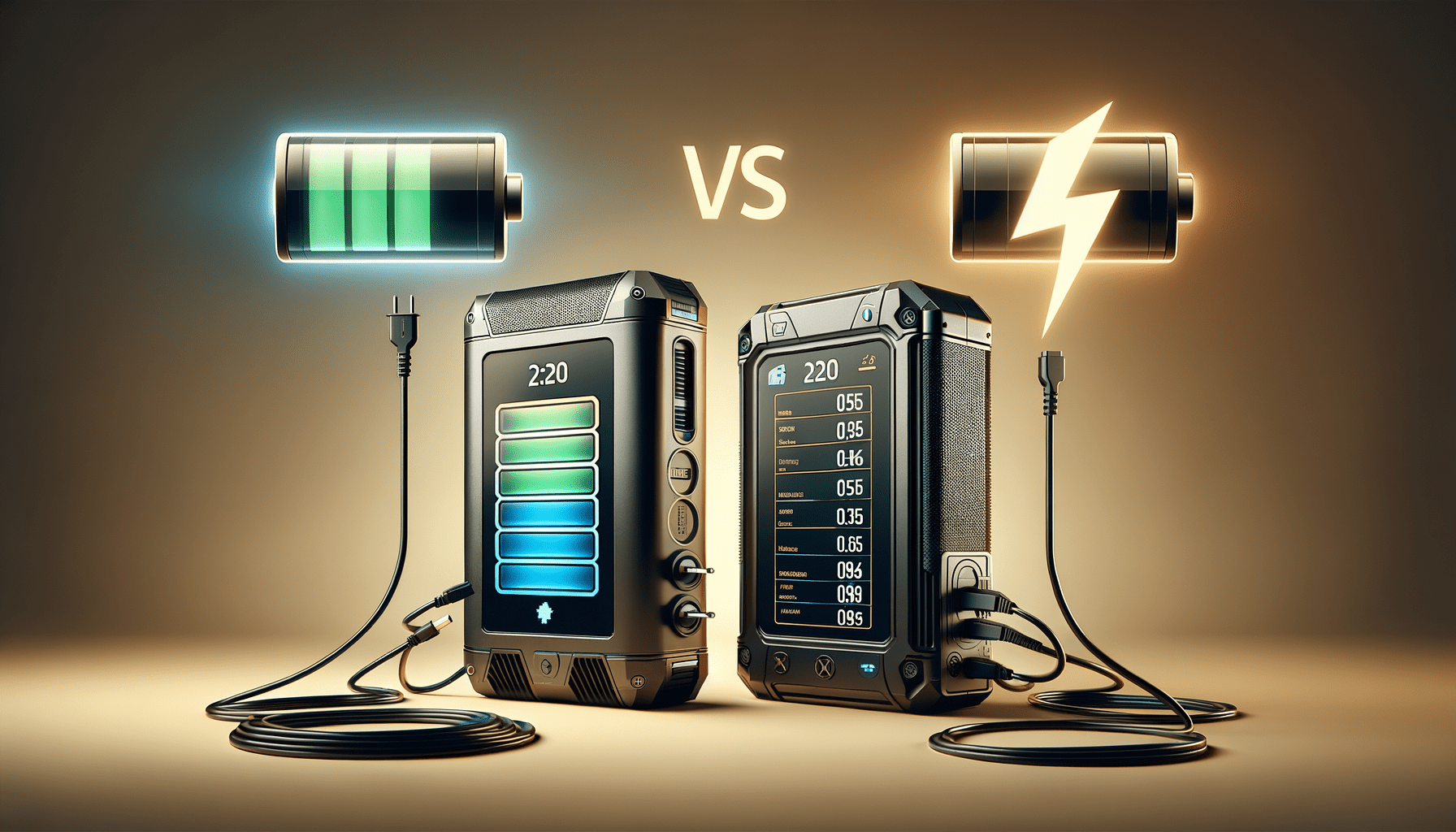When venturing off the grid or preparing for unforeseen power outages, a reliable portable power station becomes an indispensable companion. Today, we’re pitting two popular powerhouses against each other: the Jackery 240 and the Bluetti AC200P. This detailed comparison aims to arm you with the knowledge you need to pick the product that best fits your energy needs.
Design and Portability
Starting with the basics, the Jackery 240 sports a compact frame and is light on the scales at just 6.6 lbs, making it a cinch to tote around. Bluetti’s AC200P, though, packs more punch with a robust capacity of 2000Wh and, as a result, is significantly heavier at 60.6 lbs. This means that while both are portable, the Jackery 240 might be a better companion for those who prioritize lightweight travel.

Power and Performance
In the arena of power, these two stations are in different weight classes. The Jackery 240 offers a modest 240Wh, suitable for charging small devices like smartphones, laptops, and drones. Meanwhile, the Bluetti AC200P is a powerhouse with its 2000Wh battery, capable of running larger appliances such as refrigerators or electric grills, making it ideal for extensive power needs.
Output Options
Diversity in outputs is another key factor. The Jackery 240 comes with 2 USB-A ports, 1 AC outlet, and 1 DC car port. The AC200P, on the other hand, boasts an impressive array of 6 AC outlets, 4 USB-A ports, 1 USB-C port, multiple 12V DC outlets, and even wireless charging pads. If you need to power multiple devices simultaneously, the AC200P leads the race.
Charging and Solar Input
Solar compatibility is crucial for long camping trips or during emergencies. The Jackery 240 and the AC200P both offer solar charging capabilities. The Explorer 240 pairs nicely with a SolarSaga 100W panel, requiring about 5 hours in full sun for a complete charge. The Bluetti AC200P, with its higher capacity, can accept up to 700W of solar input, boasting a recharge time of around 3.5 to 4 hours under optimal conditions.

Safety and Battery Life
Safety is not to be taken lightly, and both Jackery and Bluetti take it seriously with their advanced Battery Management Systems. The Jackery 240’s lithium-ion battery is designed for long life, while the Bluetti AC200P’s LiFePO4 battery technology isn’t just safe, but it also ensures a longer lifespan with over 3,500 cycles.
Warranty and Support
Warranties offer peace of mind, so it’s good to know that the Jackery 240 comes with a 2-year warranty, which can be extended by an additional year when purchased through Jackery’s official website. The AC200P impresses with a hefty 48-month warranty, giving you significant coverage.
Technical Specifications
| Feature | Jackery 240 | Bluetti AC200P |
|---|---|---|
| Battery Capacity | 240Wh | 2000Wh |
| Weight | 6.6 lbs (3 kg) | 60.6 lbs (27.5kg) |
| AC Outlet | 110V, 200W (400W peak) | 6 x 120V/20A, 2,000W in total |
| DC Car Port | 12V, 10A | 1 x 12V/10A |
| USB Ports | 2 x USB-A | 4 x USB-A, 1 x USB-C |
| Solar Input | Compatible with SolarSaga 100W | 700W Max |
| Recharge Time (Solar) | ~5 hours | ~3.5-4 hours |
| Warranty | 2 years + 1 year extended | 48 months |
In Conclusion
The Jackery Explorer 240 and the Bluetti AC200P cater to different needs. Casual users who desire a light and mobile solution for small devices will find the Jackery 240 sufficient. In contrast, those requiring a resilient, more permanent solution for larger appliances or multiple devices will be better off with the Bluetti AC200P. Your choice should align with your power needs, portability preferences, and budget considerations.


Leave a Reply